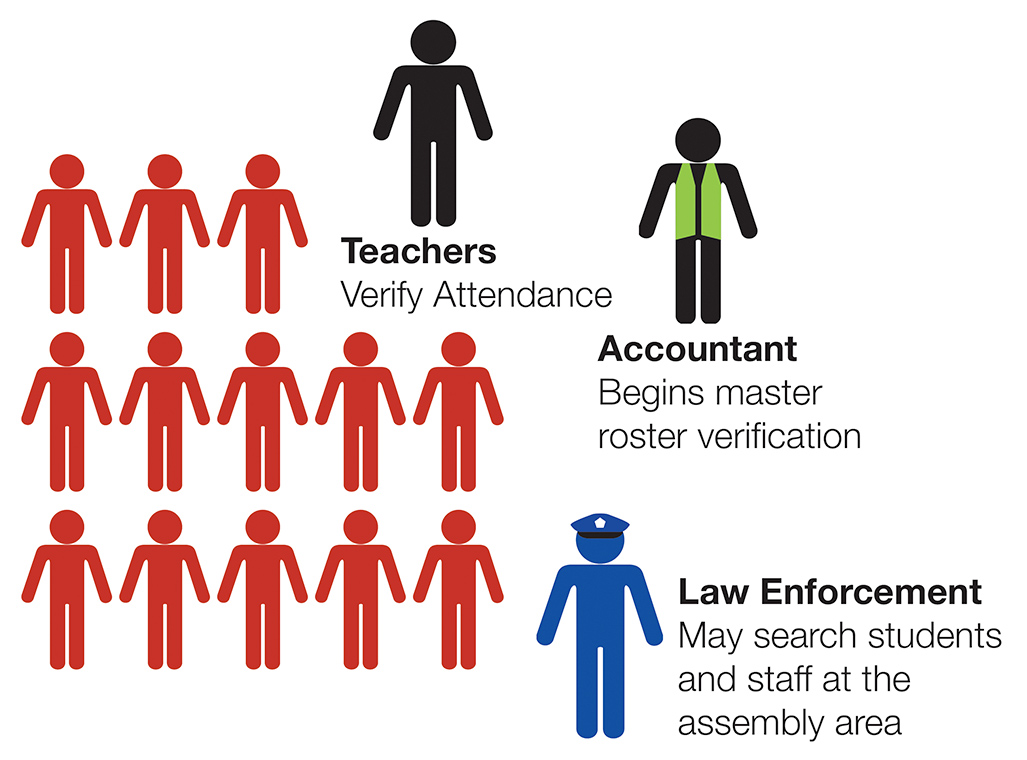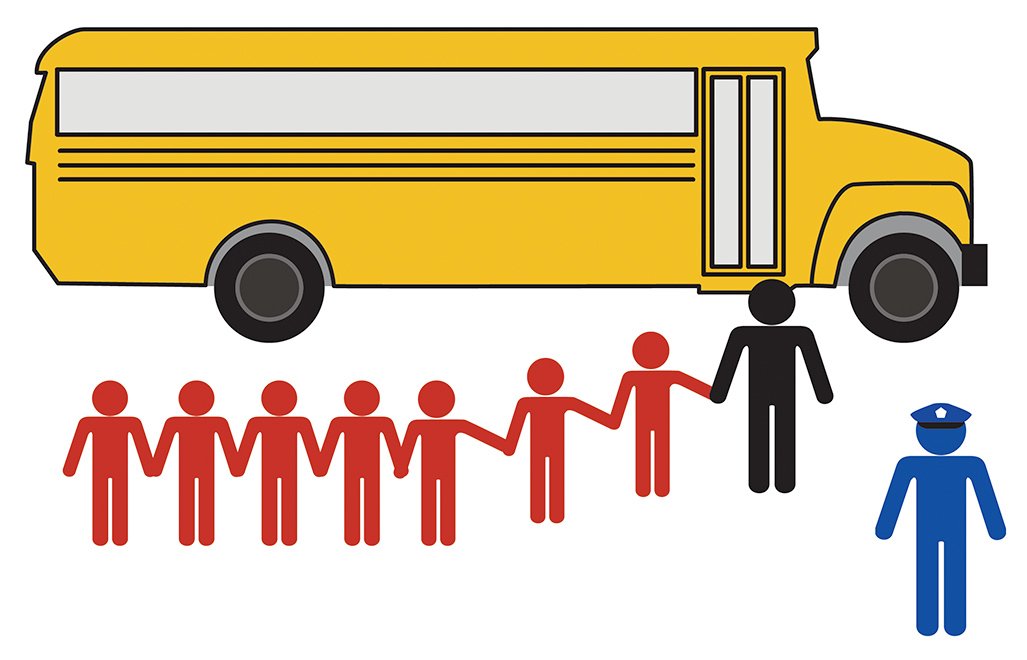TxSSC
K-12 Standard Reunification Method Toolkit
3.1 Staging the School For Transport
STEP 1
Establish Onsite Incident Commander
The first step in staging for transport is establishing School Incident Command at the affected school. Integrating with Unified Command should be a priority.

Priorities:
- Student and staff safety and wellbeing
- Student and staff whereabouts and condition
- Assemble affected school command staff
- Integrate with Unified Command Joint Information Center established
Objectives: Safe transport of students and staff to reunification site
Strategy: The Standard Reunification Method
Tactics: Will be determined by the environment
STEP 2
Classroom Evacuation
Classrooms are individually evacuated to the Secure Assembly Area. During a Police Led Evacuation, students and staff will be asked to keep their hands visible.

If it is a Police Led Evacuation after a Lockdown, each room will be cleared by Law Enforcement personnel. This process may take up to several hours. Teacher should take attendance in the classroom, prior to evacuation.
Students and Staff With Disabilities and Other Functional and Access Needs.
All students and staff should be evacuated together. An integrated evacuation ensures that all students and staff will have equal access to emergency evacuation procedures.1

STEP 3
Secure Assembly Area
At the Secure Assembly Area it is preferable that teachers stay with their students. If some teachers are unable to be at the Secure Assembly Area, doubling up classes with "Partner" teachers is appropriate.

STEP 4
Student and Staff Transport
Students and staff board the bus and are transported to the Reunification Site. Buses having audio video systems can be utilized for further accountability by having students face the camera and state their name.

References
1 Several laws address the equal rights of individuals with disabilities to access to programs and services, including students who may not be enrolled in special education services and school personnel with disabilities. These include:
- The Individuals with Disabilities Education Act, which references “our national policy of ensuring equality of opportunity, full participation, independent living, and economic self-sufficiency for individuals with disabilities.”
https://sites.ed.gov/idea/about-idea/ - The Rehabilitation Act of 1973, Section 504, which states “states: “No otherwise qualified individual with a disability in the United States… shall, solely by reason of her or his disability, be excluded from the participation in, be denied the benefits of, or be subjected to discrimination under any program or activity receiving Federal financial assistance….”
https://sites.ed.gov/idea/about-idea/#Rehab-Act - Title II of the Americans with Disabilities Act of 1990, which protects children and adults against discrimination to the full range of state and local government services, programs, and activities including public schools
https://sites.ed.gov/idea/about-idea/#ADA - In addition, the Robert T. Stafford Disaster Relief and Emergency Assistance Act of 1988 (as amended) prohibits discrimination during disaster relief and assistance activities. Section 308 of the Stafford Act was amended by the Post-Katrina Emergency Management Reform Act of 2006 to extend those protections to include race, color, religion, nationality, sex, age, disability, English proficiency, and economic status. The Stafford Act applies to: 1) FEMA services and operations, 2) Personnel carrying out Federal assistance functions, and 3) Other bodies participating in relief operations, including all private relief organizations, contractors, and volunteers.
- The Disability, Access & Functional Needs Integration Resource, which states that high quality EOPs and campus emergency plans are developed including 10 key nondiscrimination concepts, including “Providing services in integrated settings, such as reunification and recovery services, keeps parents and students connected to their support system and caregivers and avoids the need for different services or facilities” and “People with disabilities must be able to access and benefit from emergency programs, services, and activities equal to the general population.”
- Texas Education Code 37.108(f)(4) mandates that school districts must include provisions for ensuring that students and district personnel with disabilities are provided equal access to safety during a disaster or emergency situation in their multihazard emergency operations plans.
- FEMA’s Office of Disability Integration and Coordination helps “…people with disabilities before, during, and after disasters.”